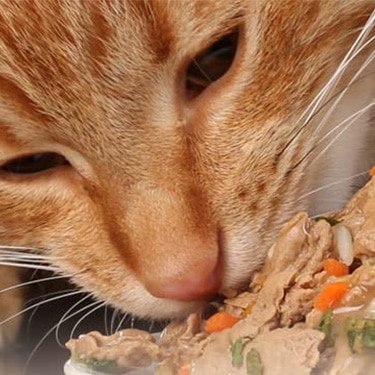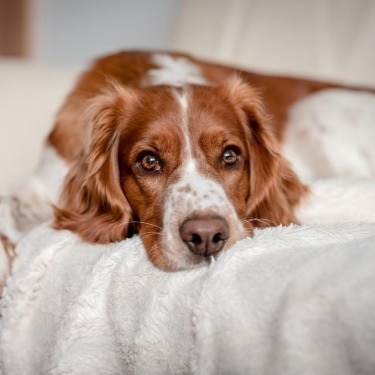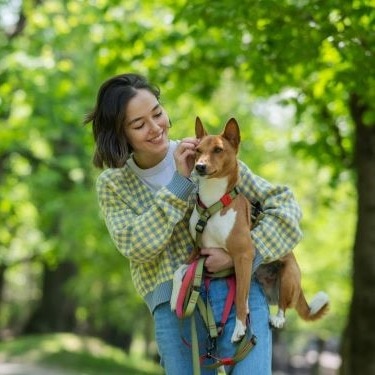
-
Find the right food for your petTake this quiz to see which food may be the best for your furry friend.Find the right food for your petTake this quiz to see which food may be the best for your furry friend.Featured products
 Adult Chicken & Barley Recipe Dog Food
Adult Chicken & Barley Recipe Dog FoodSupports lean muscle and beautiful coat for adult dogs
Shop Now Hill's Science Diet Adult Chicken & Beef Entrée Dog Food
Hill's Science Diet Adult Chicken & Beef Entrée Dog FoodChicken & Beef Entrée in a delicious loaf with complete & balanced nutrition to help keep adult dogs active and healthy
Shop Now Adult Large Breed Chicken & Barley Recipe Dog Food
Adult Large Breed Chicken & Barley Recipe Dog FoodSupports healthy joints, lean muscle, and beautiful coat for large breed dogs
Shop NowFeatured products Senior Vitality Adult 7+ Tuna & Vegetables Stew
Senior Vitality Adult 7+ Tuna & Vegetables StewImproves Everyday Ability to Get Up & Go
Shop Now Adult Tender No Corn, Wheat, Soy Chicken & Vegetables Stew Cat FoodShop Now
Adult Tender No Corn, Wheat, Soy Chicken & Vegetables Stew Cat FoodShop Now Adult Turkey & Liver Entrée Cat Food
Adult Turkey & Liver Entrée Cat FoodPrecisely balanced nutrition with the delicious taste of minced turkey & liver to help fuel the energy needs of cats during the prime of their life
Shop Now -
Dog
- Dog Tips & Articles
-
Health Category
- Weight
- Food & Environmental Sensitivities
- Urinary
- Digestive
- Joint
- Kidney
-
Life Stage
- Puppy Nutrition
- Adult Nutrition
- Senior Nutrition
Cat- Cat Tips & Articles
-
Health Category
- Weight
- Skin & Food Sensitivities
- Urinary
- Digestive
- Kidney
-
Life Stage
- Kitten Nutrition
- Adult Nutrition
Featured articles The Science Behind Our Love for Pets
The Science Behind Our Love for PetsLearn the scientific reasons why we have such strong connections with our pets, and what science says about the love between humans and our furry friends.
Read More How to Properly Mix Wet & Dry Pet Foods
How to Properly Mix Wet & Dry Pet FoodsAn Orange cat eating from a bowl filled with mixed food
Read More What Is Littermate Syndrome? Pet Adoption Guide
What Is Littermate Syndrome? Pet Adoption GuideLearn more about littermate syndrome in dogs and cats and how to successfully navigate adoption and early socialization processes.
Read More -


We've all seen the pet-shaming videos. You know the ones: A pet parent comes home to find a happy, tail-wagging dog waiting at the front door. Person and dog walk into the living room and — oh no! — the couch has been mysteriously ripped apart! Stuffing is everywhere! The pet parent gasps in horror. What could possibly have happened? Who could be to blame? Why do dogs chew things?
Learn what makes your dog gnaw on his surroundings and how you can convince him to leave your socks (or plants, or books, or furniture or toilet paper rolls) alone.

Chewing & Separation Anxiety?
The first thing you need to do is to figure out why your dog is engaging in destructive behavior. One common reason is separation anxiety. Most dogs will give you sad puppy eyes when you leave, but a dog with separation anxiety will go beyond a simple pout or whine when you leave him home alone.
A dog with separation anxiety may soil in the house or start destructive behaviors like tipping over the garbage can or ripping up his dog bed. He may even injure himself attempting to escape. Anxious dogs might also bark or drool excessively or refuse to eat or drink. Many pups with separation anxiety don't respond well to being crated. Consult your vet on ways to help your dog overcome separation anxiety.
Why Do Dogs Chew?
Boredom can be another culprit. Think about it: You are at work all day, and your dog is home, alone, just waiting for you to return. Think about how bored you'd be!
To combat his boredom, you can offer chew toys or toys that dispense food. Keep some out of reach so that you can surprise him with something novel, or break out his favorite chew toy just before you leave. Just like you might do for your cat, you can invest in a puzzle feeder that keeps your dog active and busy and gives you some peace of mind. Just make sure that his toys are filled with a daily portion of his healthy dog food instead of treats.
Finally, puppies who are teething frequently want to chew on something to relieve their pain. Plus, just like human babies, they want to put everything in their mouths. New textures! New tastes! New experiences! So much fun! To keep your pup from staring shamefacedly at a shredded slipper, make sure he has plenty of sturdy and age-appropriate chew toys and try not to leave him unsupervised for too long.


Tasty Tips
Advice to Chew On
How can you teach your pup not to chew? Crating your dog or designating a doggy-proof room are two options. You should start crate training when he is young if possible, and be consistent. However, make sure your energetic pup gets plenty of time to run around. You can also teach him a simple "drop it" or "leave it" command if he chews on anything other than his toys in front of you.
If you're away for long periods, consider hiring a dog walker or enrolling your pooch in doggy day care. These options keep your dog active and give him a social outlet when you're away, both of which will go a long way toward keeping you from coming home to find a new hole in your wall.
If nothing else works, you can try making an unpleasant-tasting deterrent spray to discourage your dog from chewing on specific objects (like his favorite chair leg). Cuteness suggests a mixture of white vinegar and lemon juice or apple cider vinegar. Never spray the deterrent on your dog's body, and keep up with his behavioral training to reinforce what you want him to learn.

Tucker Him Out
The most important thing you can do to prevent destructive behavior is to give your dog lots of exercise and love! Keeping your dog well-exercised and giving him lots of social stimulation when you're home can go a long way to changing his behavior when you're not home. After all, who isn't ready to settle in for a long, quiet nap after a brisk walk in the neighborhood or a session of backyard fetch?
What you shouldn't do is discipline your dog after the fact. Your dog might act ashamed on your viral video, but really he's reacting to your tone of voice and mannerisms. Correcting your dog when you catch him in the act can help him learn, but telling him "no" hours after the fact won't help him connect the discipline with the destruction.
We know destructive dogs can cause havoc on a home. Consider why your canine pal is acting out, and give him some alternative options to let out his boundless energy.


Kara Murphy is a freelance writer and pet parent who lives in Erie, Pa. She has a goldendoodle named Maddie.
Related products

Chicken & Beef Entrée in a delicious loaf with complete & balanced nutrition to help keep adult dogs active and healthy

Chicken & Barley Entrée in a delicious loaf with great taste and precisely balanced nutrition to support 5 essential building blocks for lifelong health

Supports lean muscle and beautiful coat for adult dogs

Supports healthy joints, lean muscle, and beautiful coat for large breed dogs
Related articles

Learn how to help keep your dog's immune system in tip-top shape, including nutritional immune system support for dogs and other strategies.

Discover how the field of dog science is giving us more and more insights into the inner workings of our furry best friends.

Wondering where can I buy a dog? Consider adoption and explore the pros and cons of adopting a dog from a breeder versus an animal shelter.

Your dog's coat and skin are a big part of your dog's overall health. Ensure you keep your dog's coat healthy, by following these simple tips.

Put your dog on a diet without them knowing
Our low calorie formula helps you control your dog's weight. It's packed with high-quality protein for building lean muscles, and made with purposeful ingredients for a flavorful, nutritious meal. Clinically proven antioxidants, Vitamin C+E, help promote a healthy immune system.
Put your dog on a diet without them knowing
Our low calorie formula helps you control your dog's weight. It's packed with high-quality protein for building lean muscles, and made with purposeful ingredients for a flavorful, nutritious meal. Clinically proven antioxidants, Vitamin C+E, help promote a healthy immune system.

